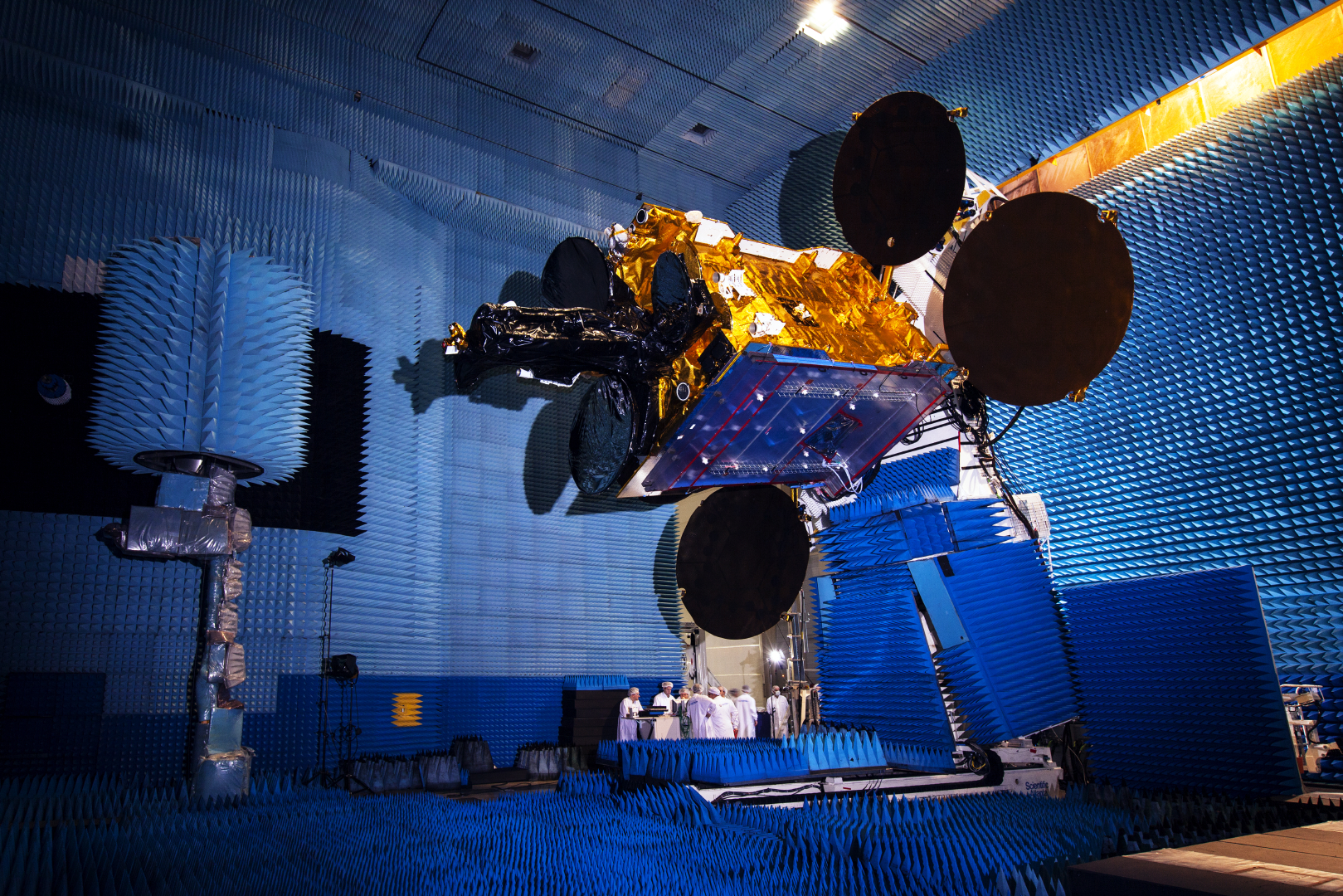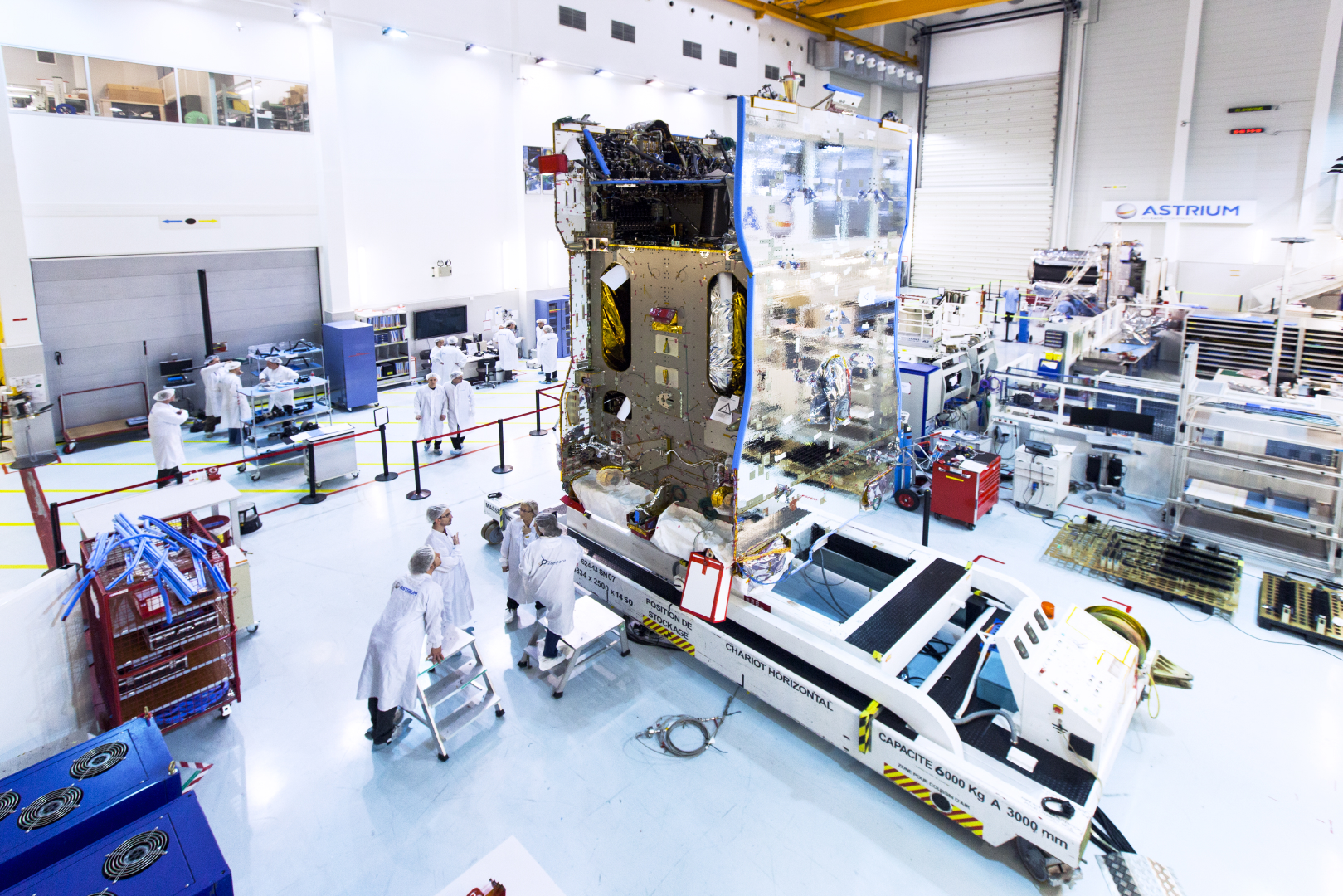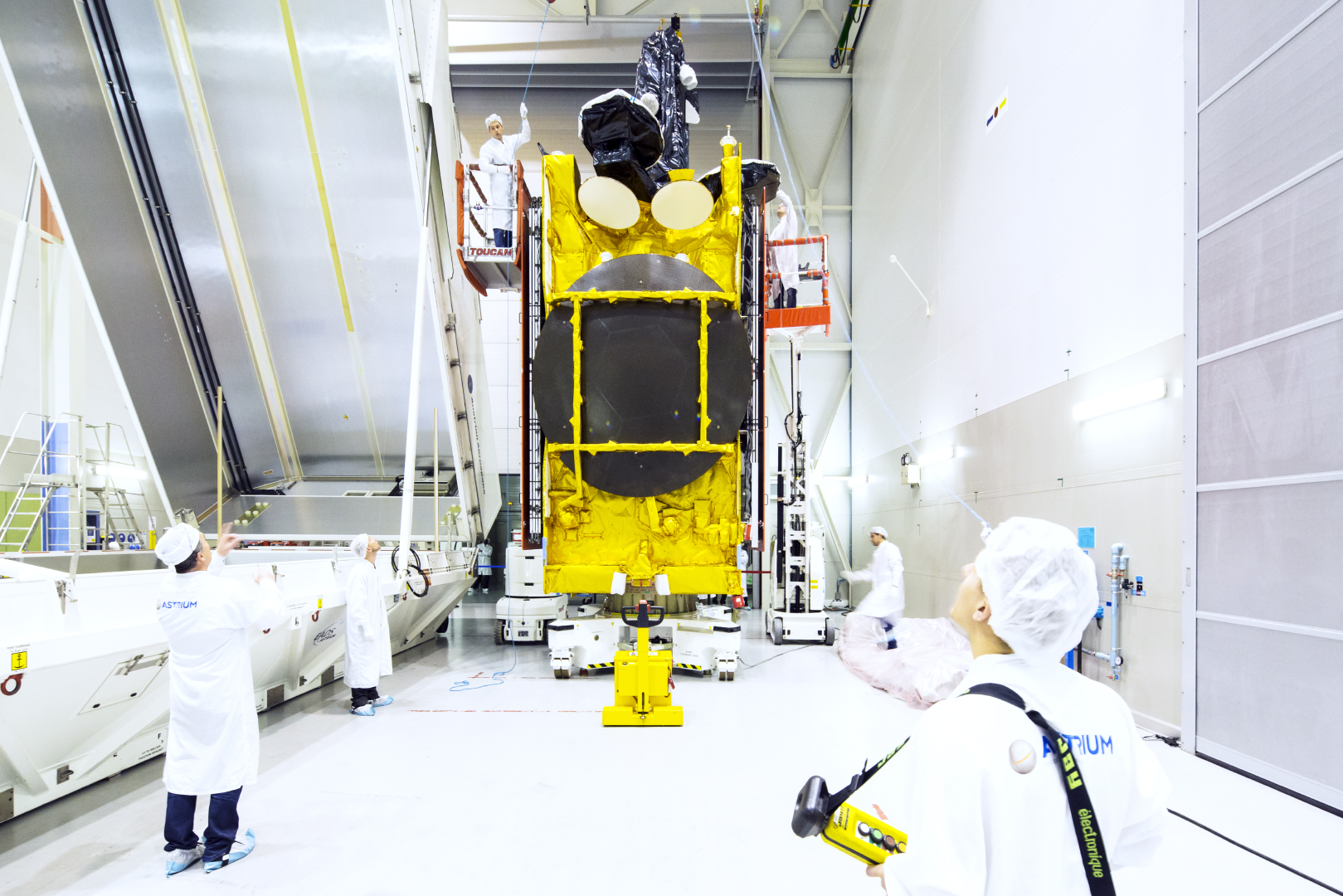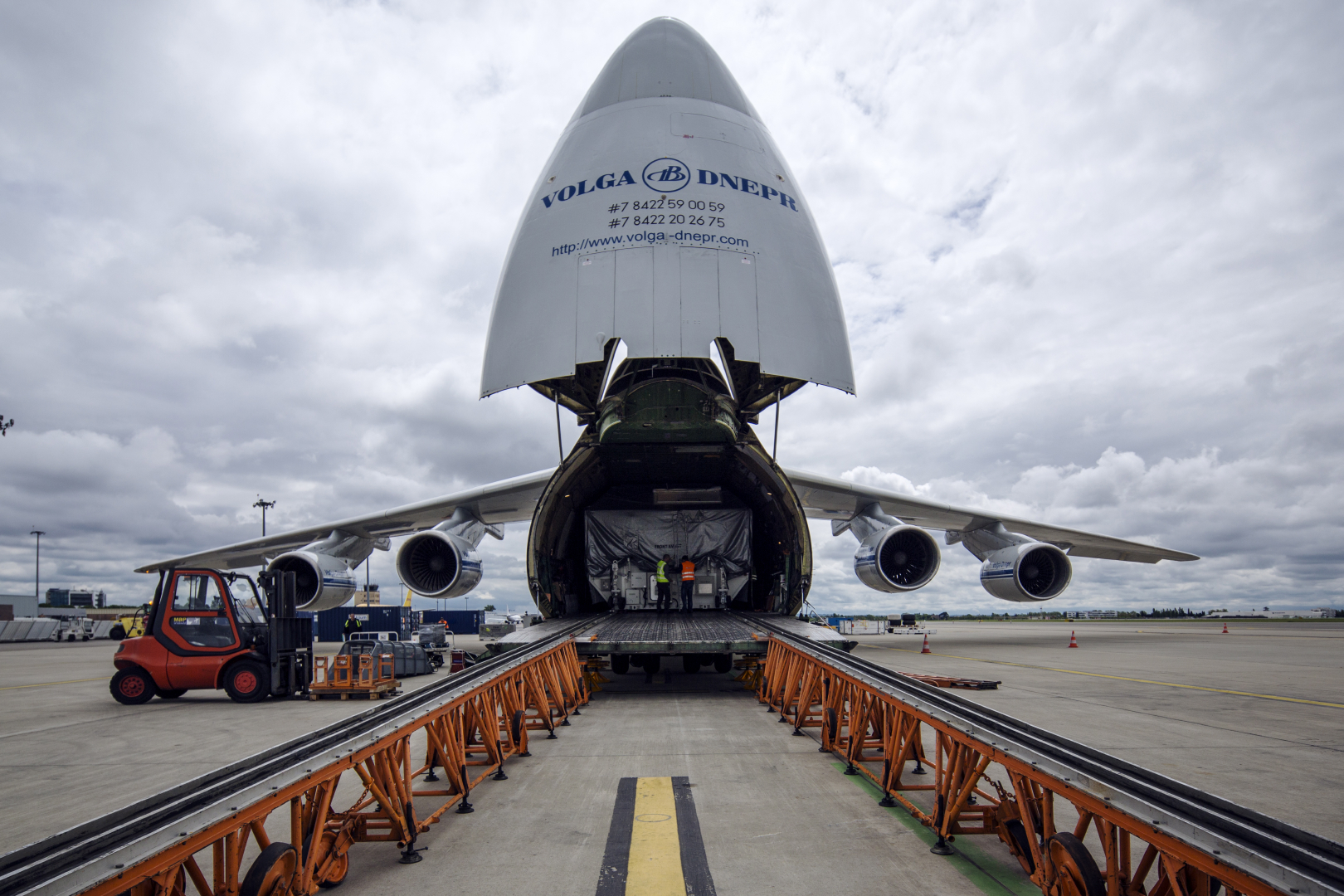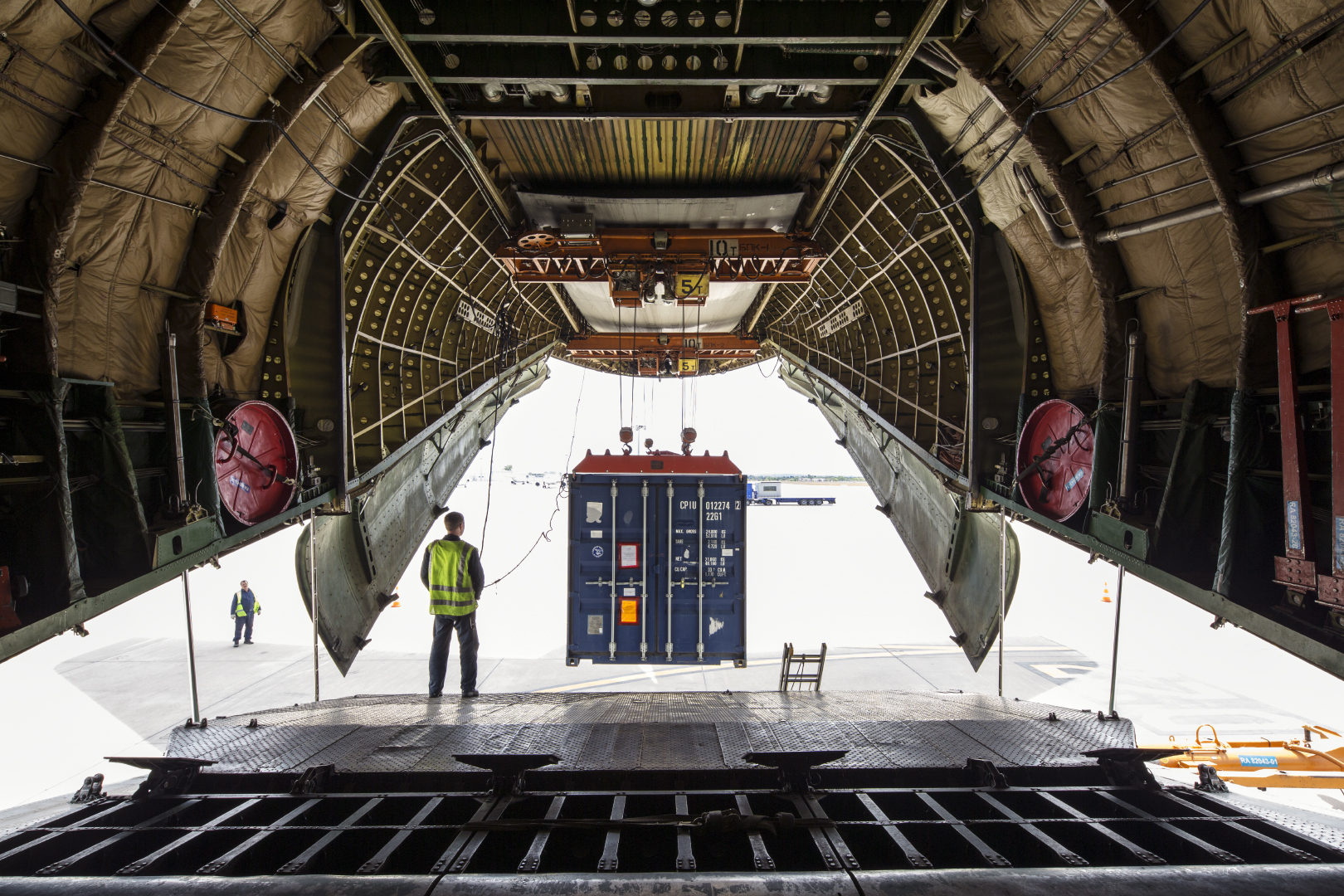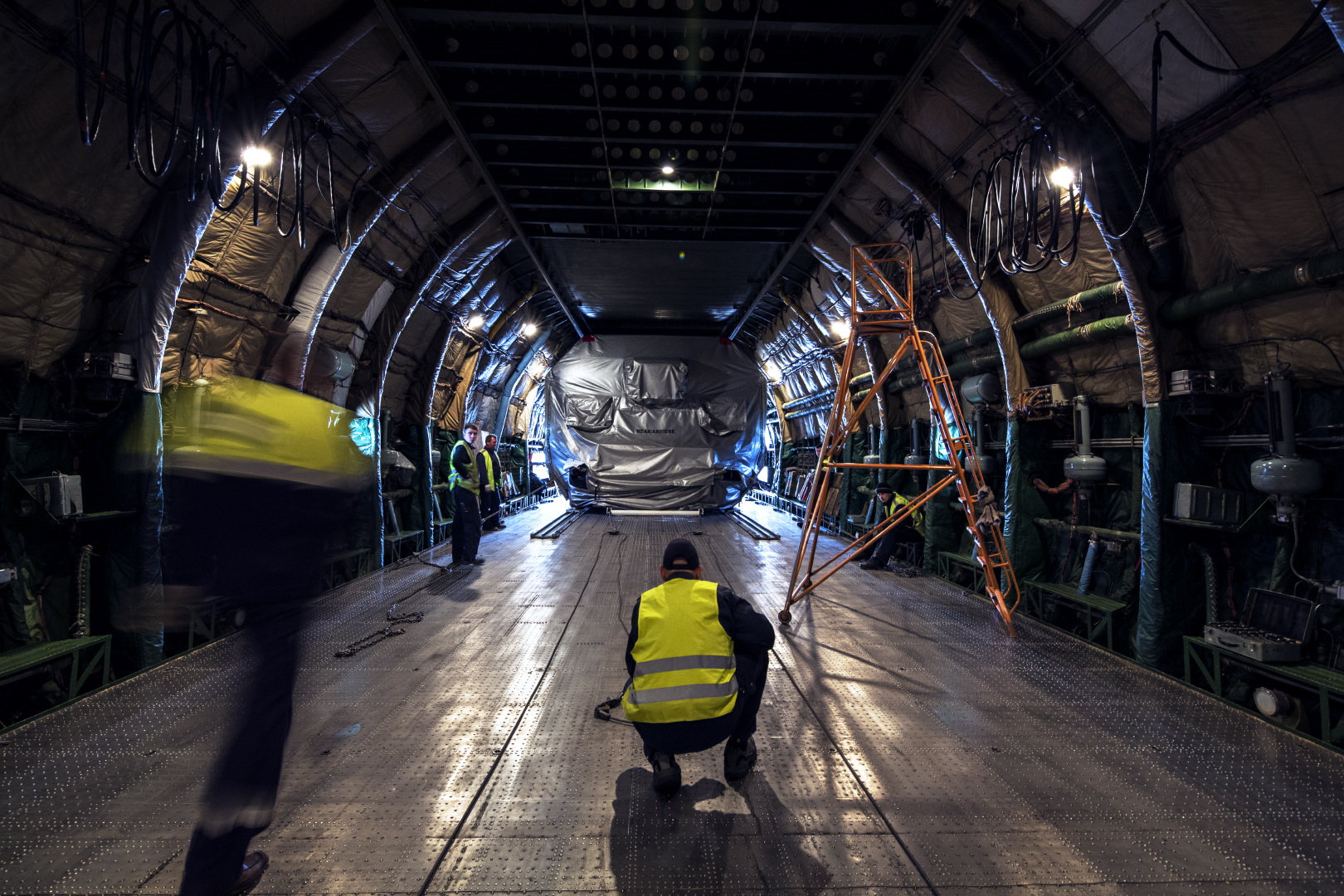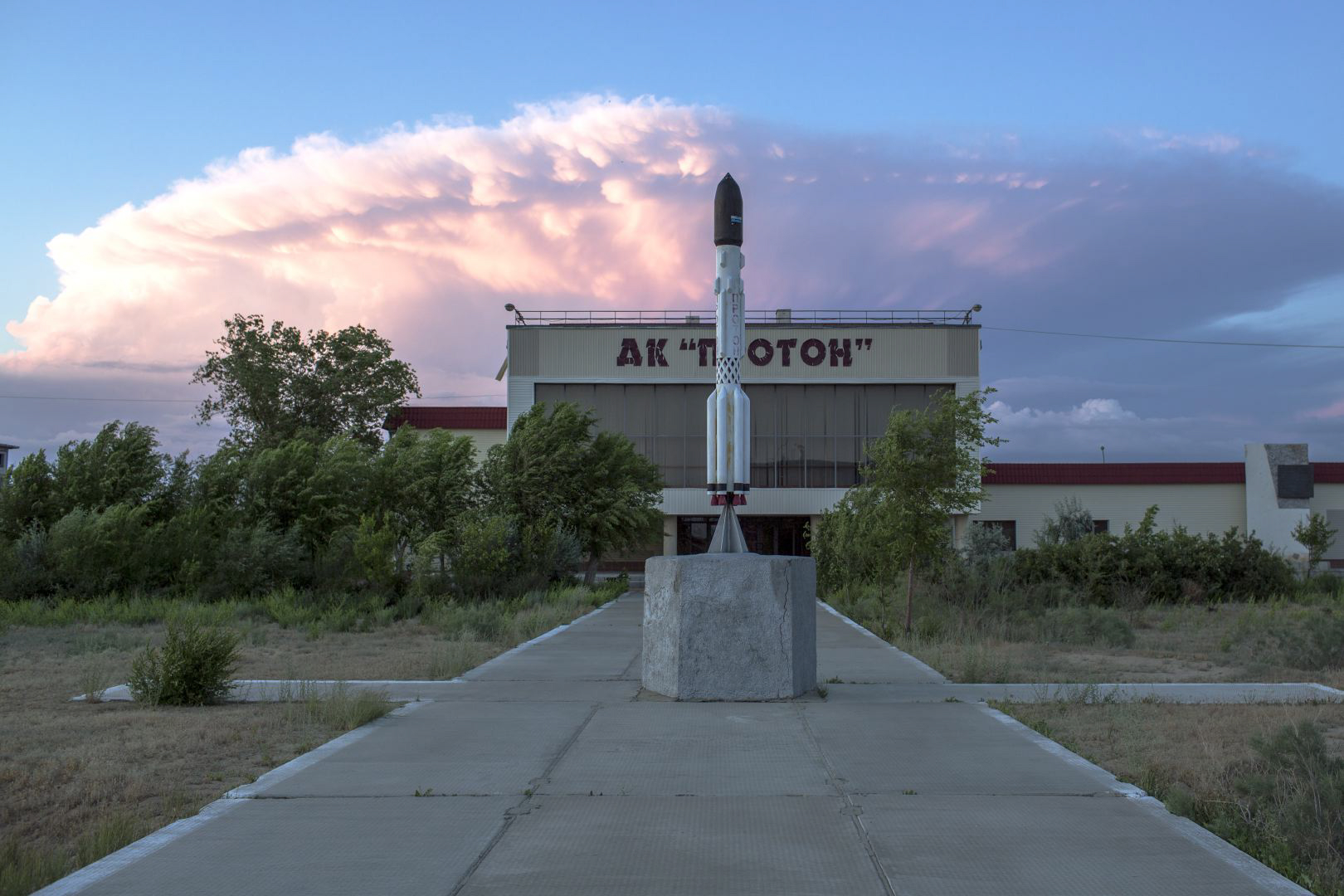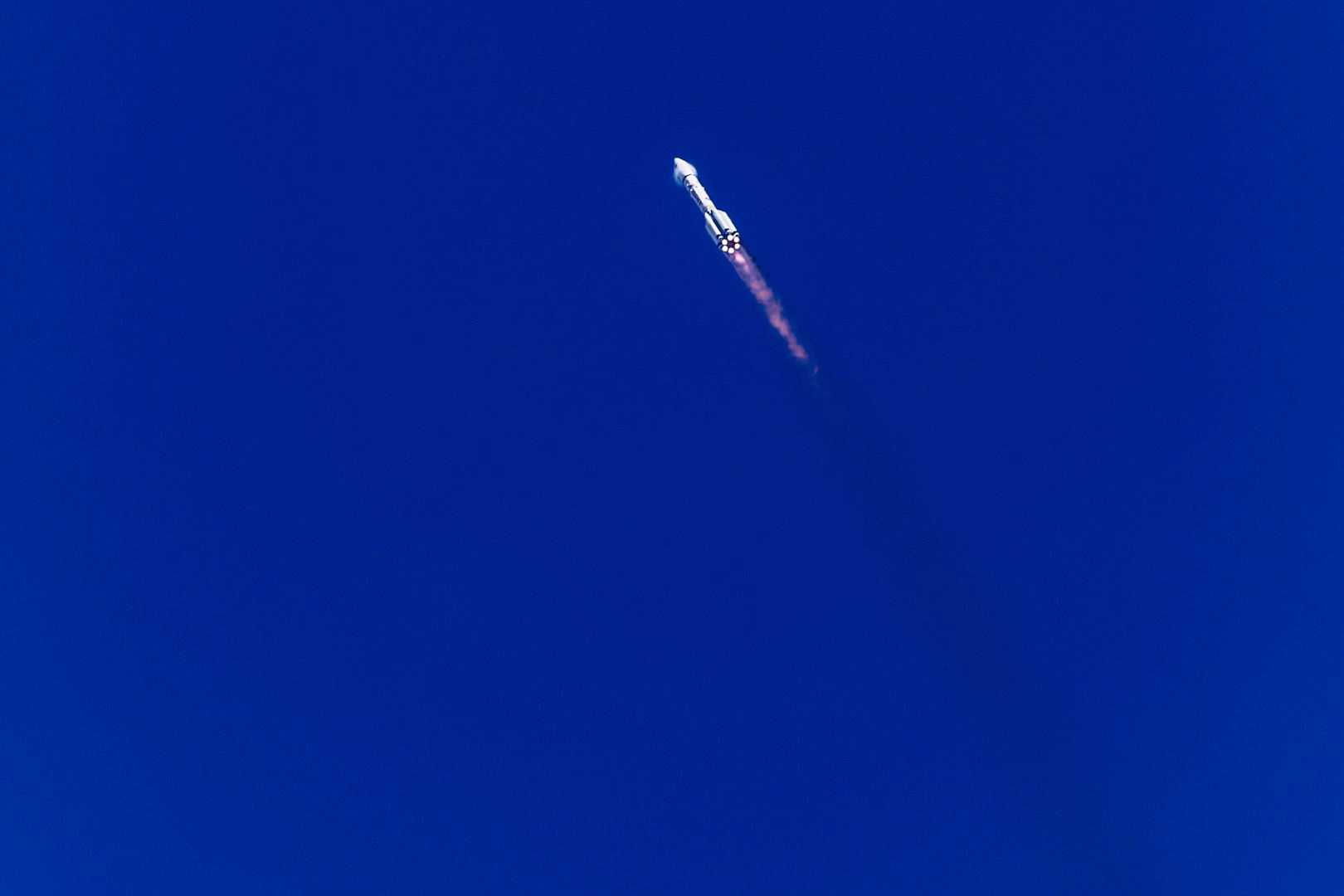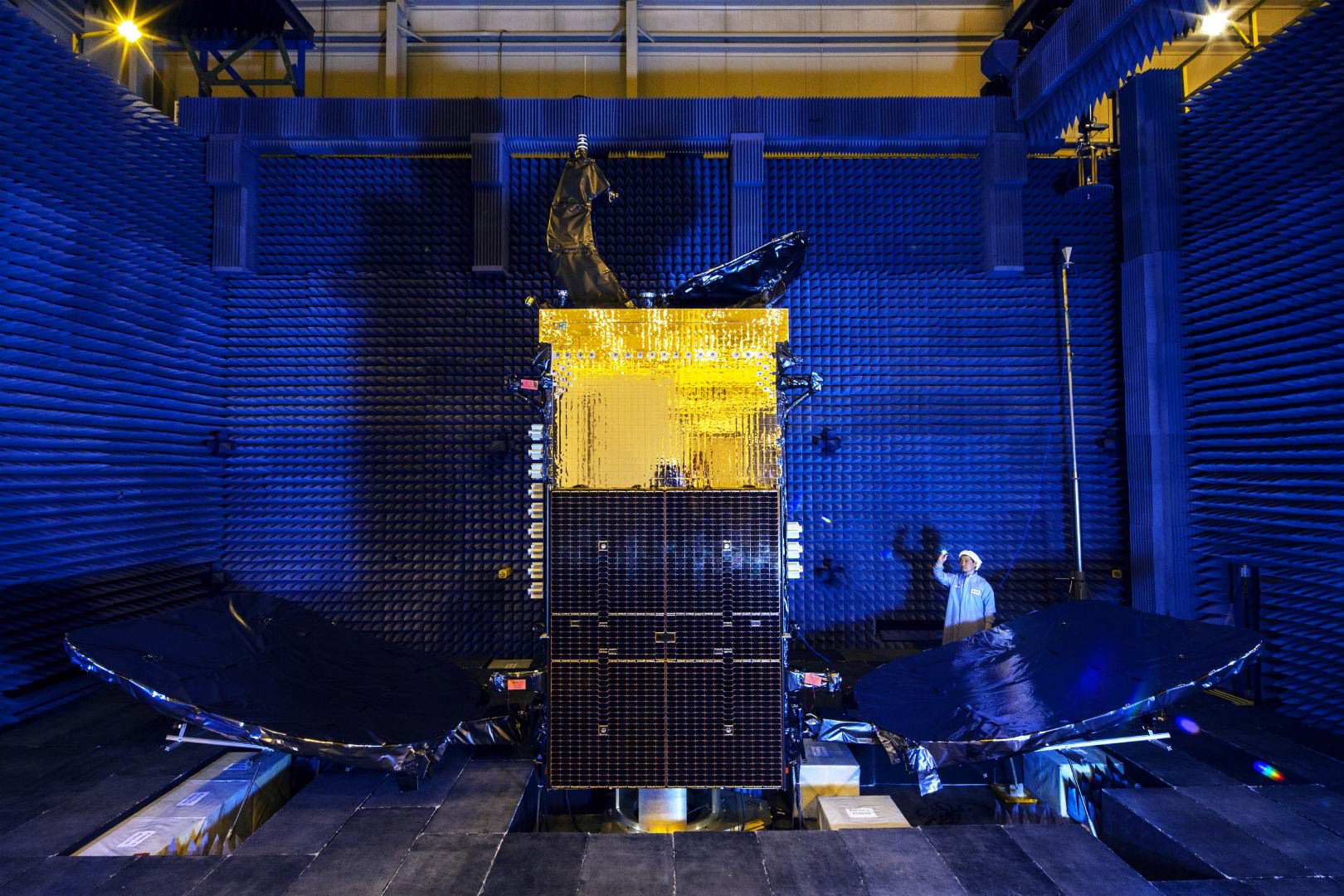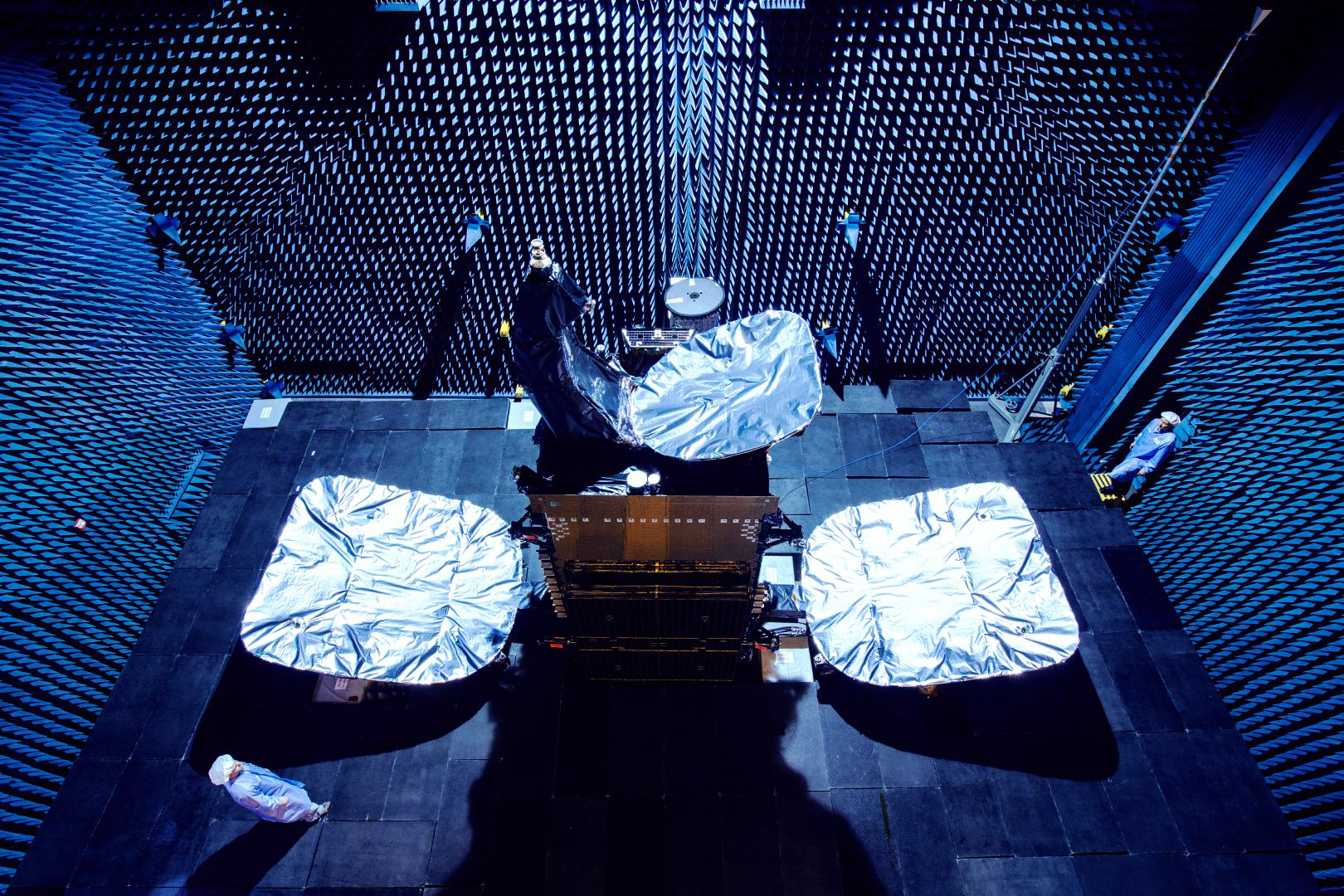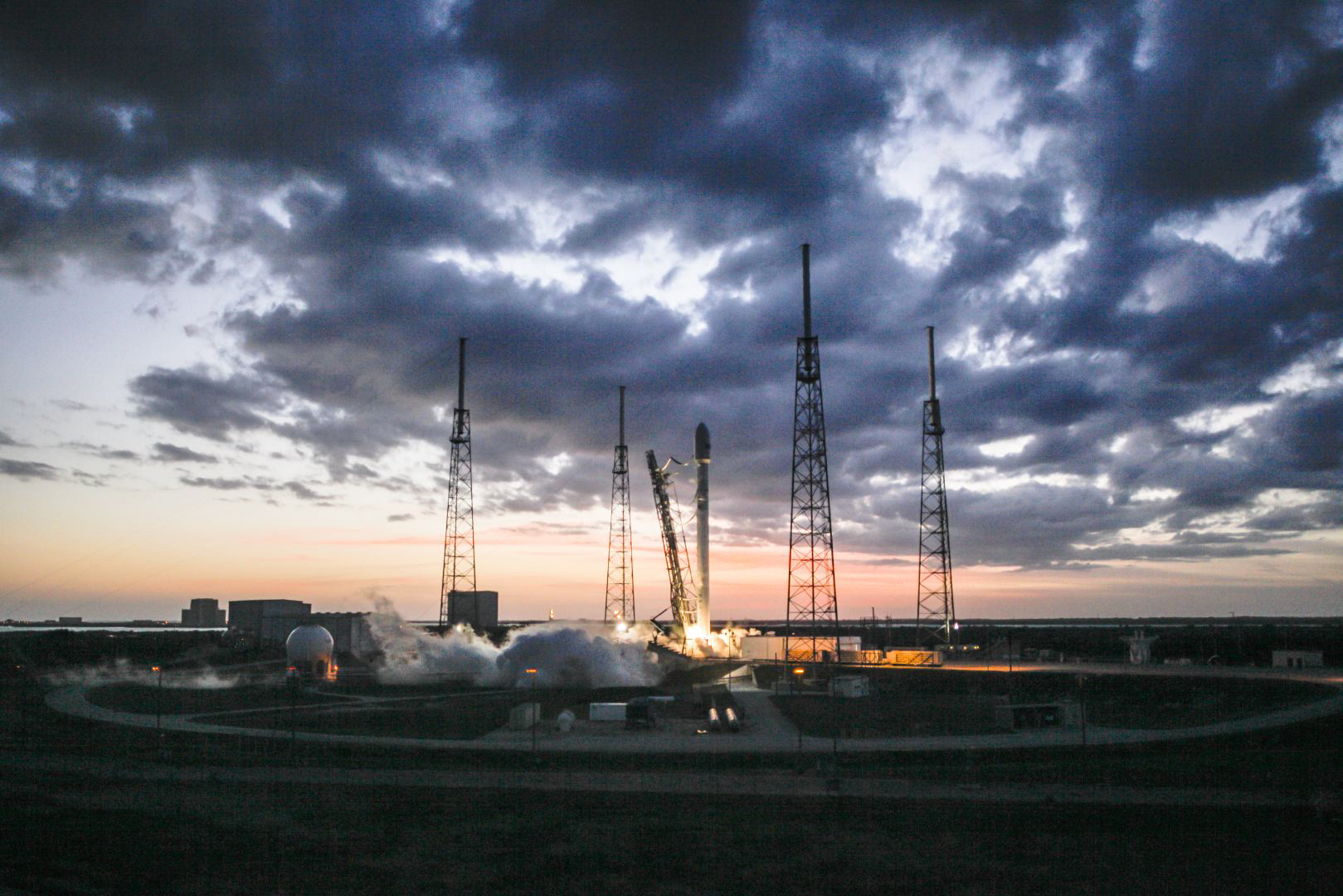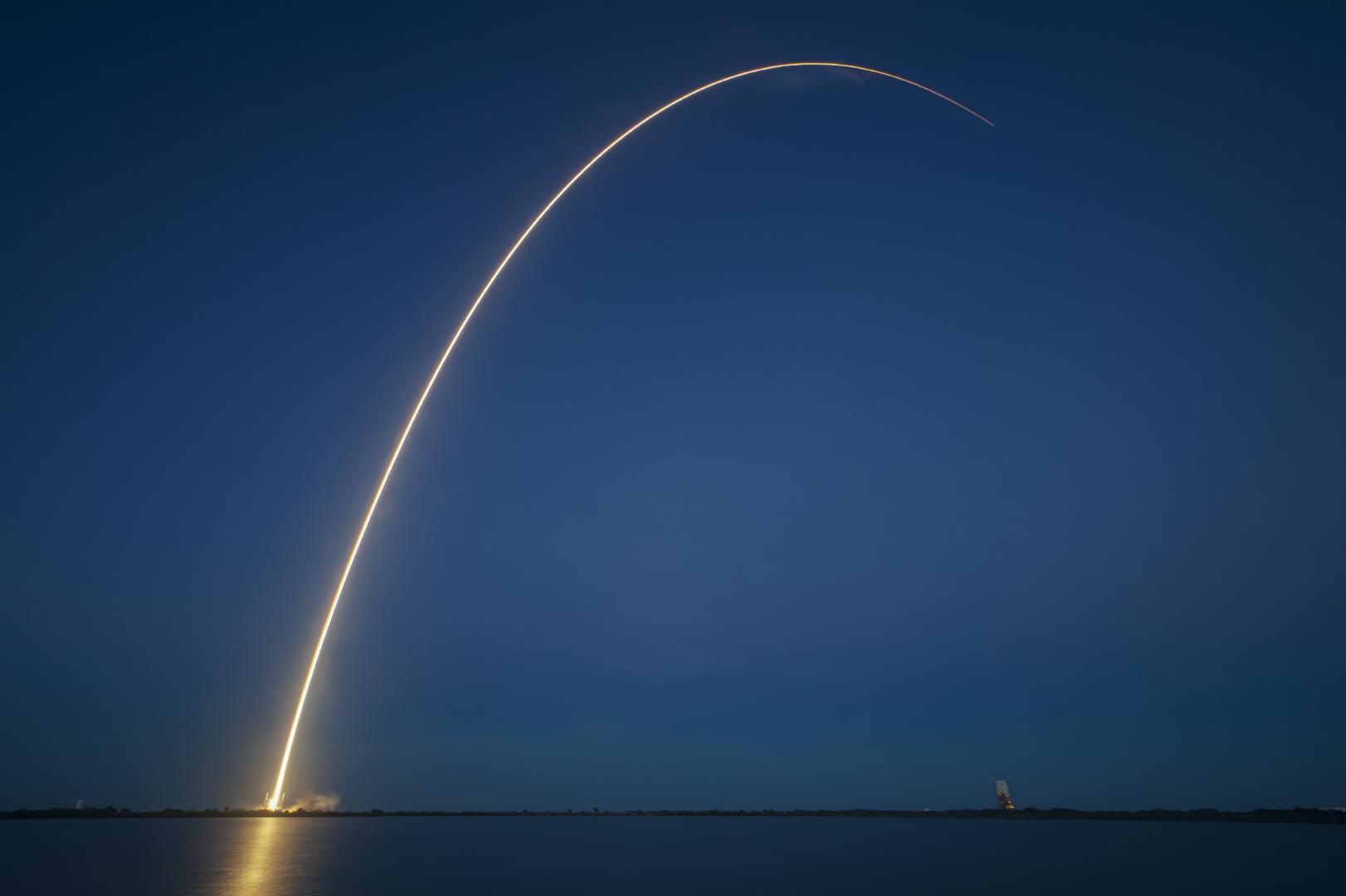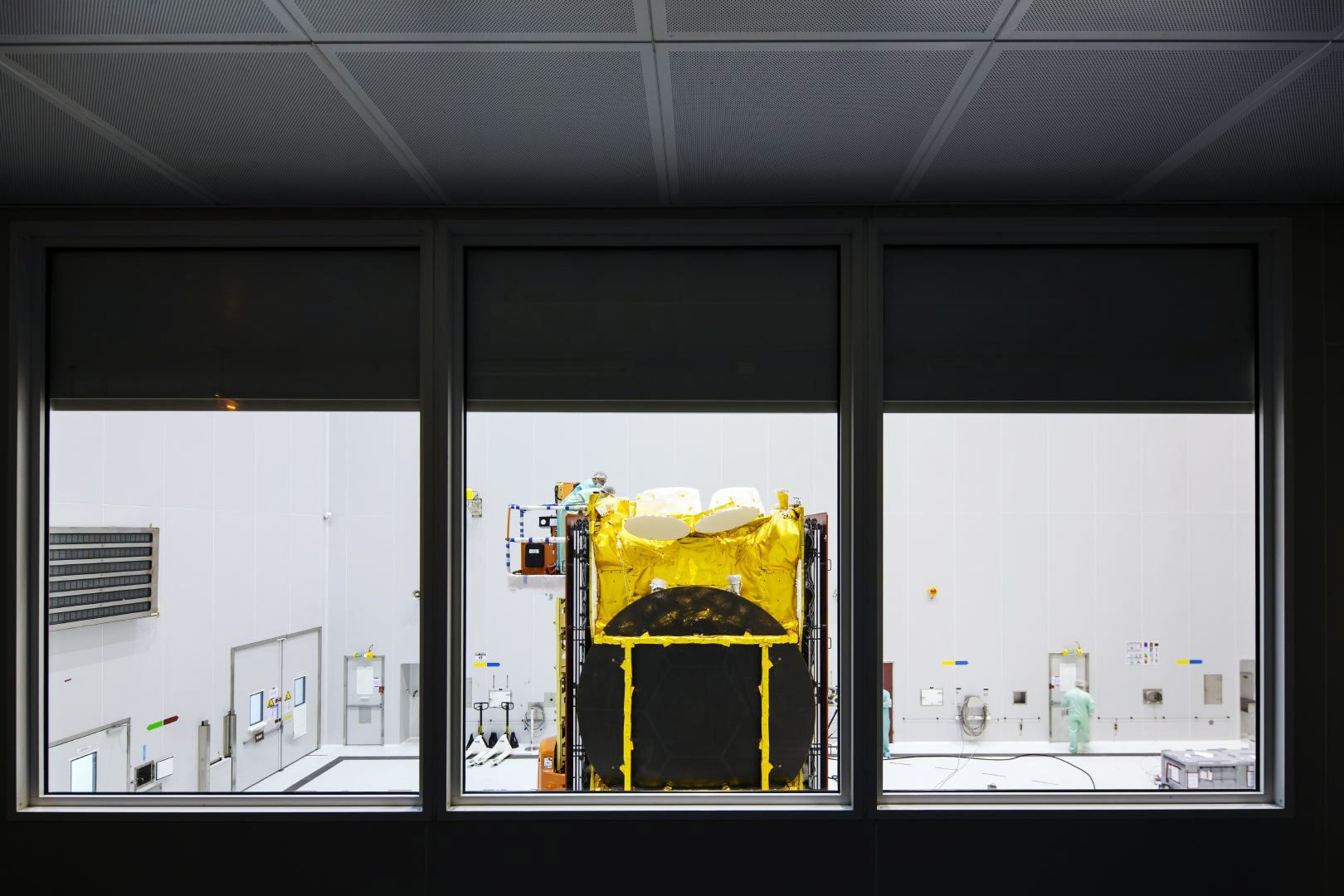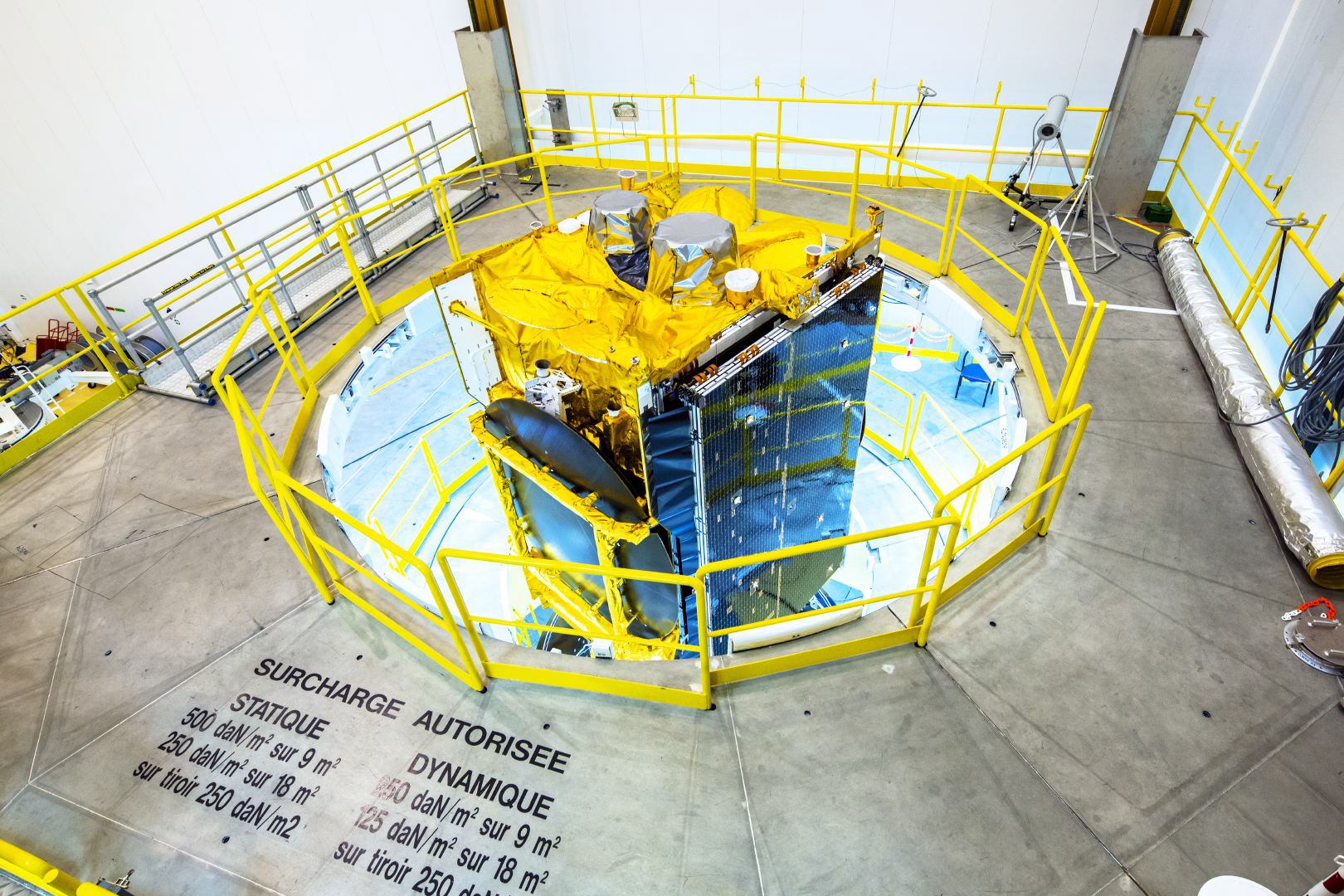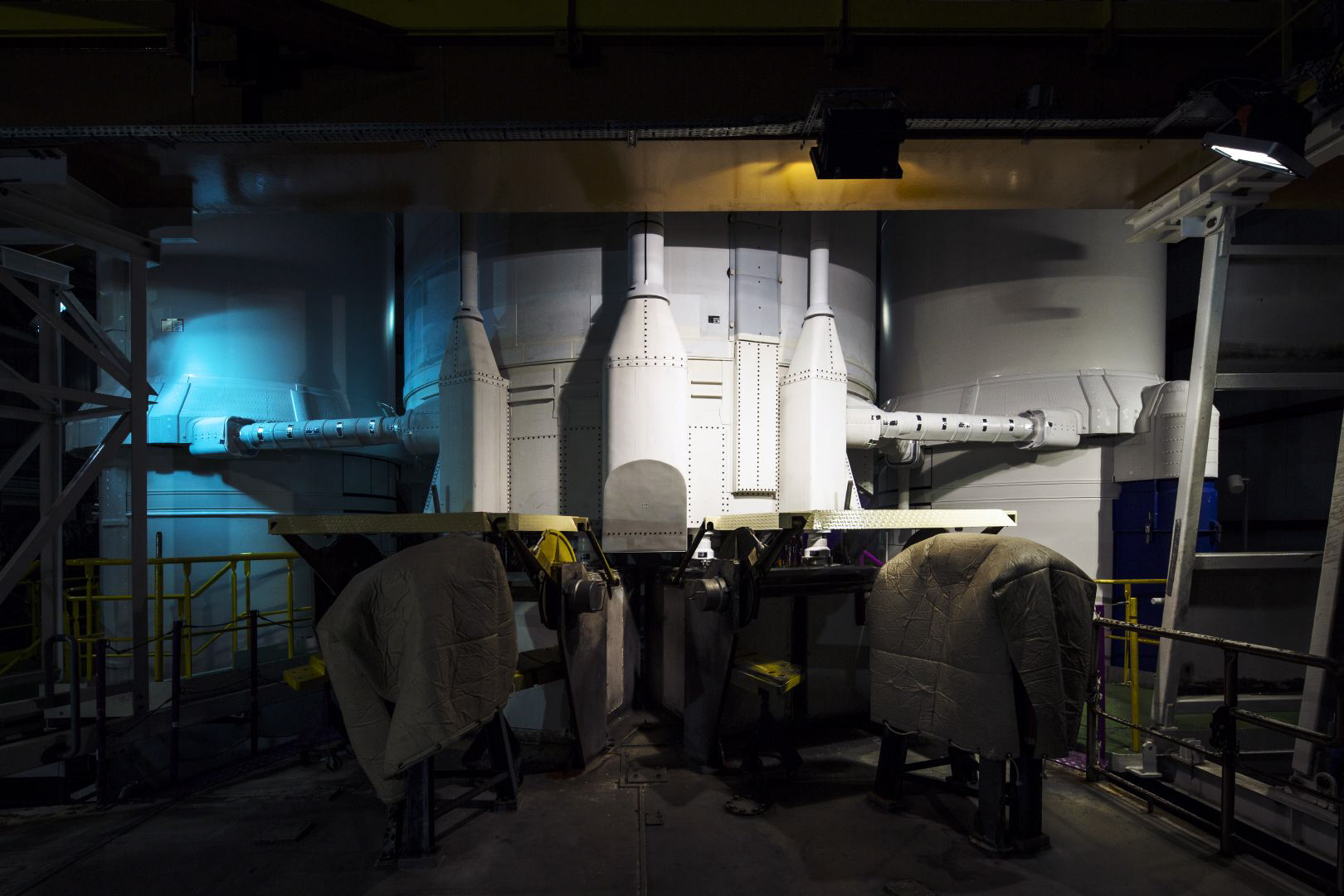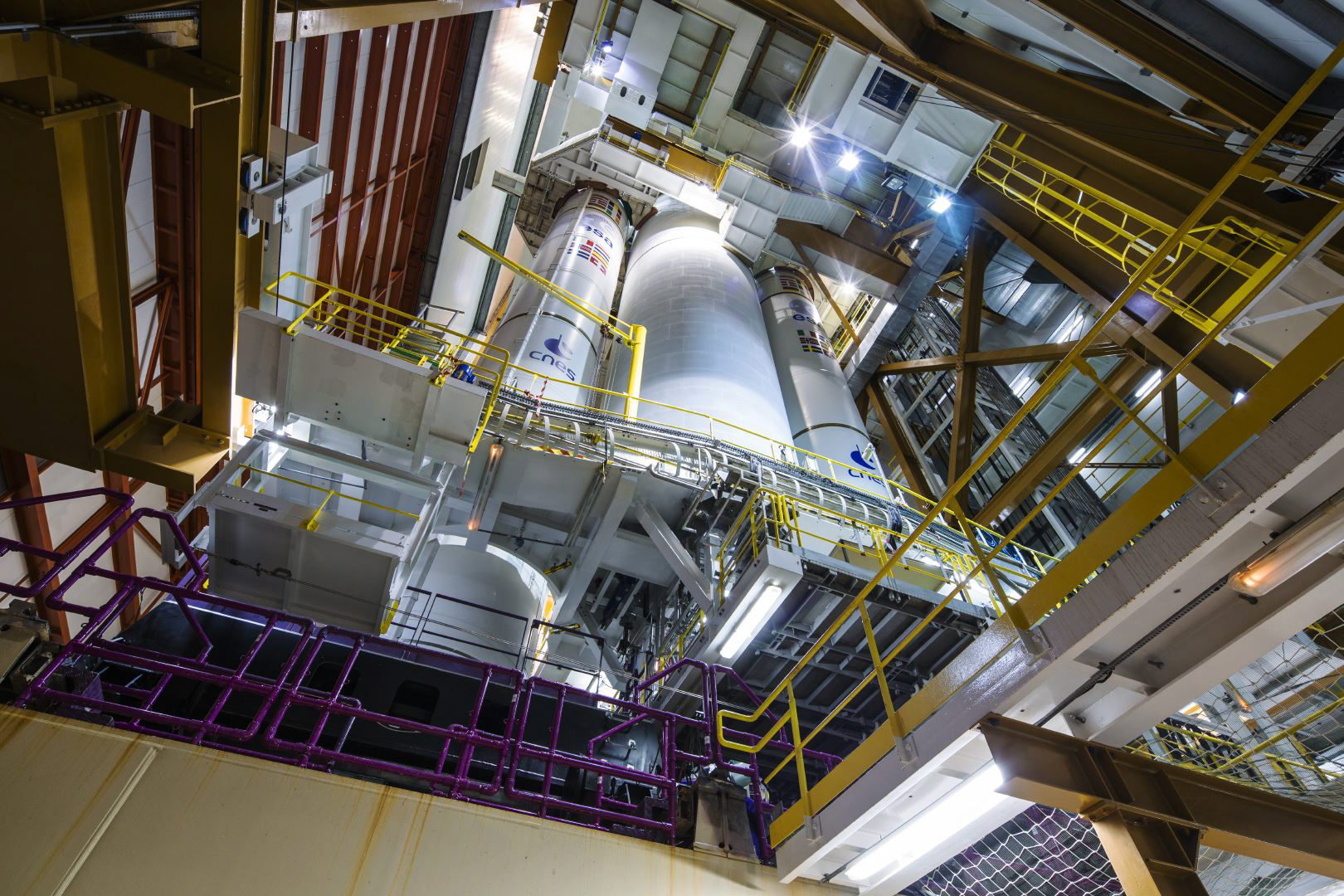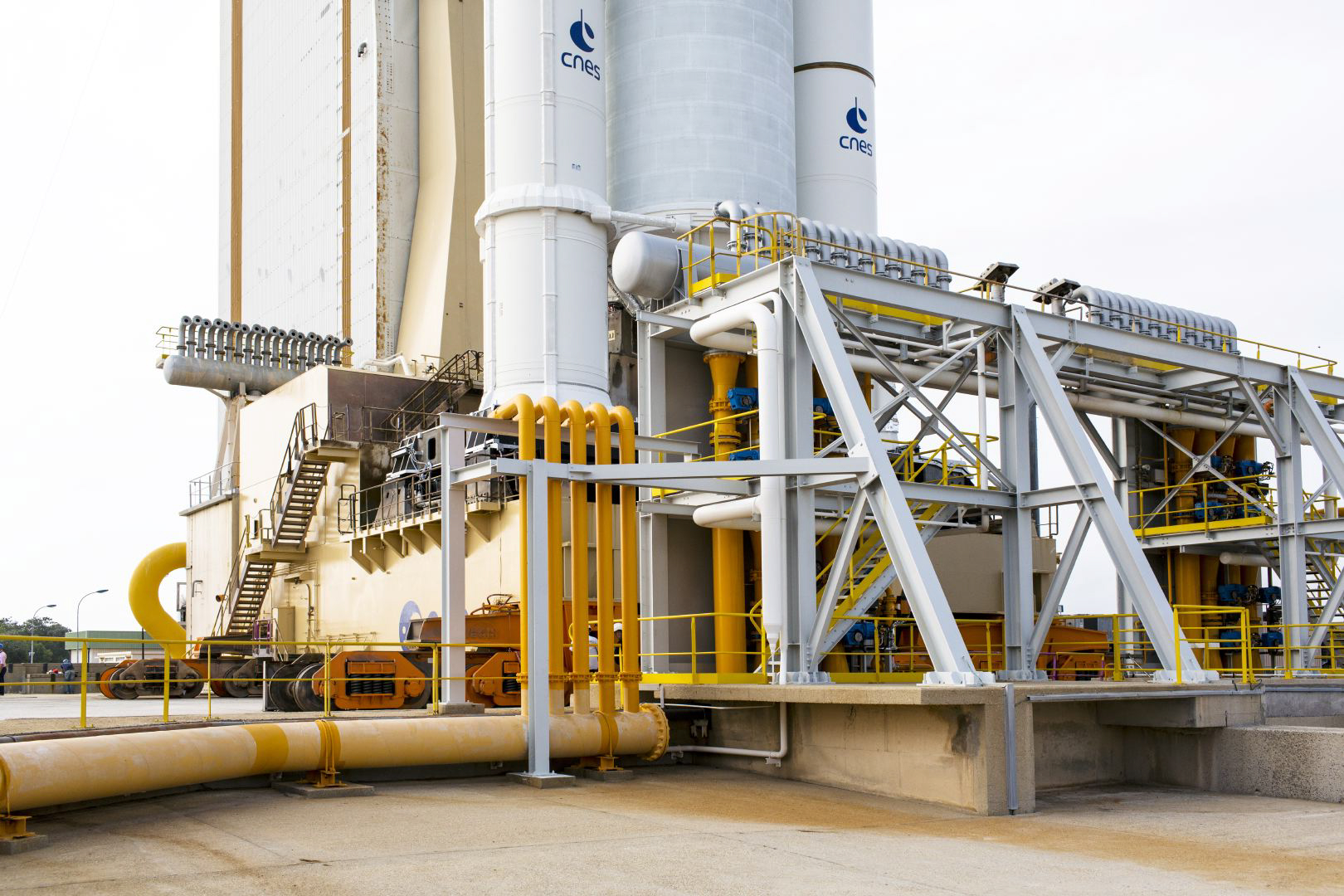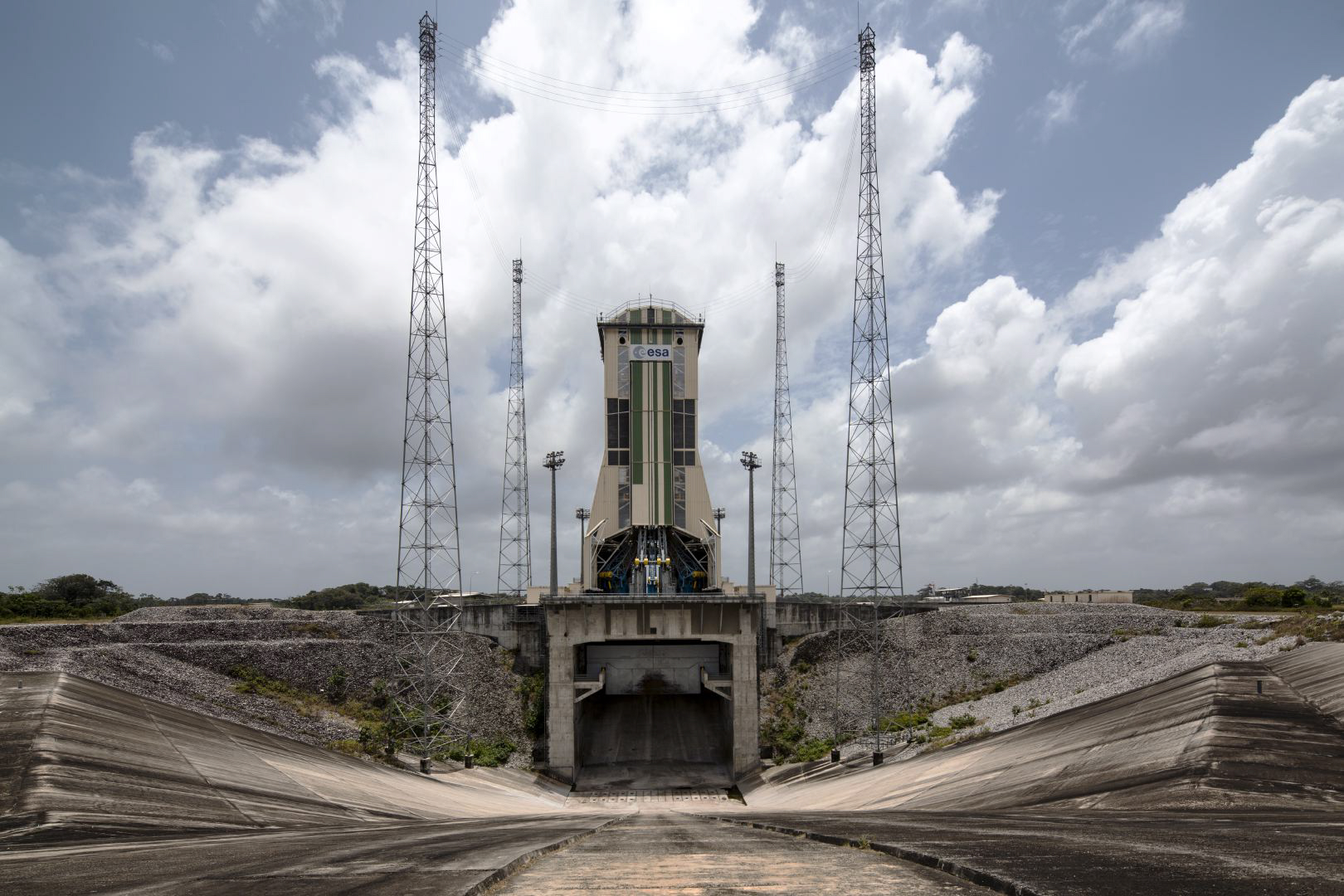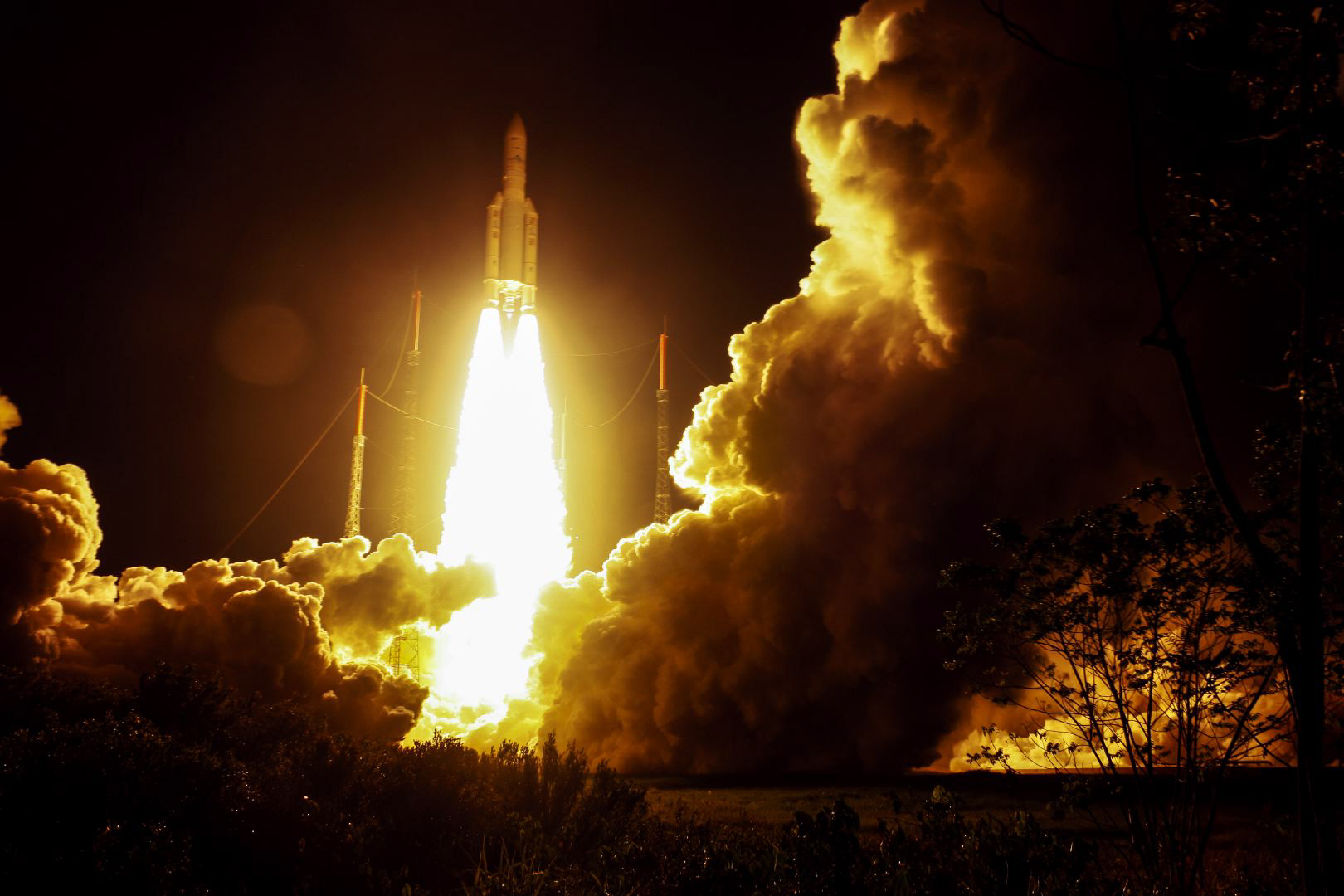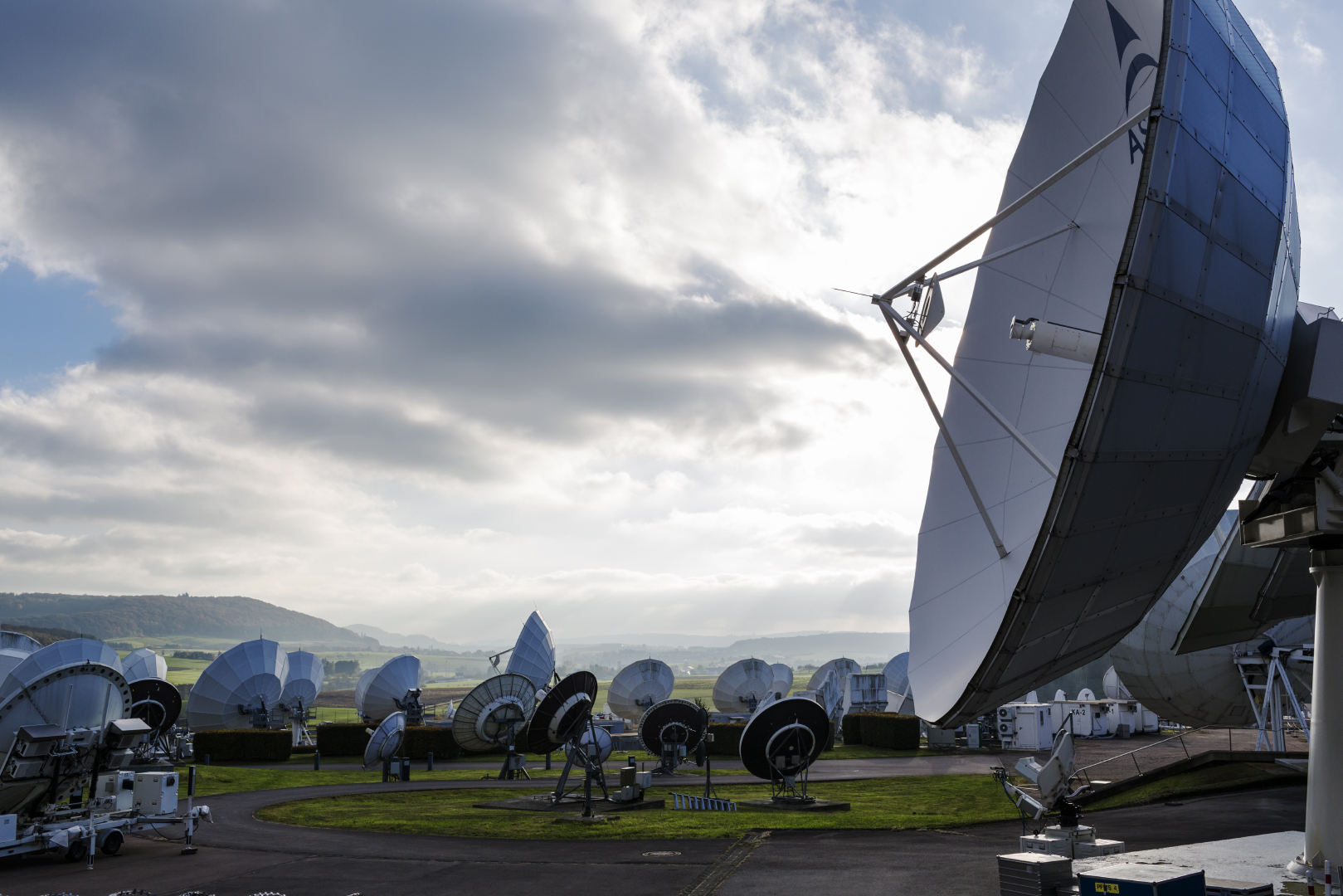Over 6,600 satellites have been launched into space since the Soviet Union launched Sputnik in 1957. 3,600 are currently in operation and launch frequencies are ever increasing to satisfy our global thirst for more communication, data and broadcast channels.
In 2012 I began a long-term partnership with SES to document some of the world’s most advanced commercial satellites from their design, construction and testing through to international transportation, space launch and operations. From their headquarters in Luxembourg they control a large fleet of satellites, monitoring both their position and operation but also the data and broadcast channels they relay.
In March 2015, the project was published in The Guardian Weekend magazine with an accompanying essay by Andrew Smith. You can read the full feature here:
http://www.theguardian.com/science/2015/mar/13/satellites-space-race-andrew-smith
SES-6 weighs over 6 tonnes and is currently orbiting above Latin America and the Caribbean where it will relay broadcast and data networks for 15 years. The story behind this satellite represents a heady and absolute cooperation across a surprising set of nations; all pushing the boundaries of science, design and engineering. SES-6 was designed and constructed by a French Space Technology group, Airbus Defence and Space (formerly Astrium), funded by a Luxembourgian Satellite Operator offering bandwidth to Latin America.
SES-6 under strict secrecy and under the cover of night was transported across Toulouse in a custom, pressurised container. It is then carefully loaded onto the world’s largest cargo jet operated privately from the Ukraine and flown non-stop to Kazakhstan.
Baikonor Cosmodrome, Kazachstan, a mysterious area of land leased by the Russian Government since the 1950’s. It was the epicentre of the Russian-American space race and later cavernous silos of nuclear weapons on standby during the worst of the Cold War.
It is here that SES-6, undergoes carefull integration on the Proton launch system. The Proton rocket was originally designed to deliver nuclear bombs onto the Eastern Seaboard of the US Mainland but now finds itself operated in the first US-Russian partnership to stem from the cold war. On July 2nd 2013 the Proton completed a text book launch sequence and delivery of SES-6, it marked the 387th flight of the Proton launch vehicle since the start of this historic program in 1965.
SES-8 is a communications satellite built by Orbital Sciences Corporation and will be the first geostationary satellite that will be launched using SpaceX’s Falcon 9 rocket system.
Space X, a new player on the launch scene, is threatening to reduce prices, improve environmental credentials, increase scalability and rock the existing market. Elon Musk has ambition to travel to Mars but also dominate the commercial launch industry with his modular Falcon 9 launch system.
Falcon-9 is heading towards being a re-usable space-craft, the first of its kind, and is 100% designed and built in the US. Re-filling the vacuum at Cape-Canerval left by the Shuttle Program required a heady mix of approval from the US Government and investors. Without the track-record of existing providers SES took a gamble launching SES-8 with them in December 2013. After a number of technical delays the Falcon 9 successfully launched the satellite into a Geostationary orbit over Asia. As the first of its kind, and not without elevated risk, the launch was heavily discounted to $60 million dollars.
The French Guiana space centre can handle up to 5 Ariane launches per year in parallel with its Vega and new Soyuz program. A sprawling collection of enormous facilities dedicated to satellite, launcher and fuel preparation. The Spaceport – also known as the Guiana Space Centre – is a strategically-located facility that provides optimum operating conditions for Arianespace’s commercial launches.
From French Guiana the European Space Agency (ESA) operate the world’s reference for heavy-lift launchers. Ariane 5 can carry payloads weighing more than 10 metric tons to geostationary transfer orbit (GTO) and over 20 metric tons into low-Earth orbit (LEO). With satellite weight decreasing and cost being an important factor many industry critics argue that Ariane 5 is too costly and too heavy to remain commercial competitive. What cannot be argued is its incredible reliability and track record of 71 successful launches and 57 in a row. The 172nd being the succesful launch of SES-8.
Ariane’s incredible capability was witnessed in French Guiana on the 22 March this year. Launching 2 satellites simultaneously and flawlessly to geostationary altitudes. The incredible force is created by a heady combination of engine and fuel types. Ariane 5’s cryogenic H158 main stage is called the EPC (Étage Principal Cryotechnique—Cryotechnic Main Stage). It consists of a large tank 30.5 metres high with two compartments, one for 130 tonnes of liquid oxygen and one for 25 tonnes of liquid hydrogen, and a Vulcain engine at the base with thrust of 115 tonnes-force (1.13 meganewtons). Attached to the sides are two solid rocket boosters each weighing about 277 tonnes full. Each delivers a thrust of about 630 tonnes-force.
Ariane 5 has a strong track record of successful launches compared to the recent poor reliability of Proton, and SpaceX being new have yet to prove a track record, their arrival nonetheless shook up the market and grabbed headlines. Currently, Ariane also have a long/full waiting list, whereas SpaceX has availability, and offers a huge cost saving. The European Space Agency knew this was coming, and yesterday finally (after 2 years of discussion) announce that they have secured the funds needed to move forward with the development of an Ariane 6 rocket, in a bid to rival SpaceX. It will be loosely based on the current model, but embracing new technology to bring the cost down compared to their current model.

